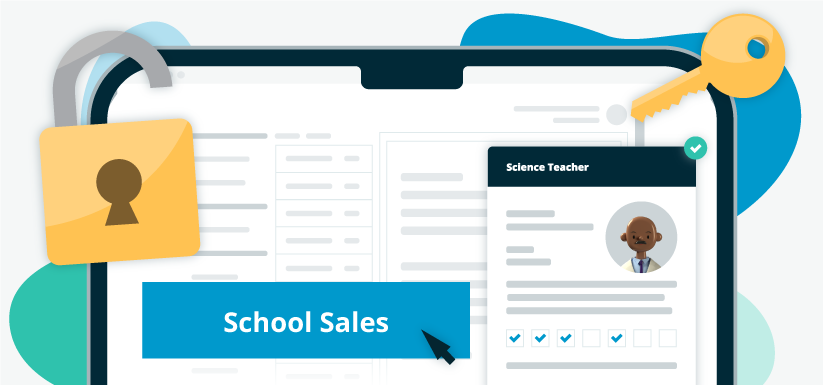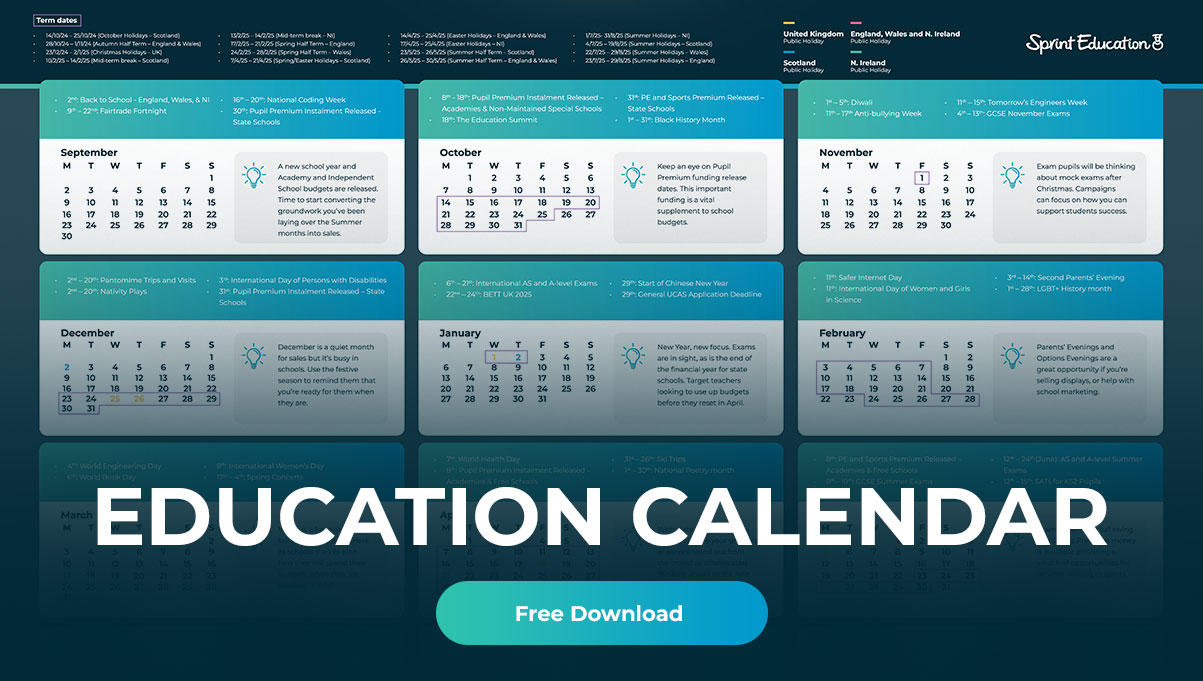8 Reasons why you’ll sell more to schools with peer-generated content
8 Reasons why you’ll sell more to schools with peer-generated content
Understand why the most successful education marketing strategies of the past year are those that utilise peer-generated content in order to generate leads.
Understand why the most successful education marketing strategies of the past year are those that utilise peer-generated content in order to generate leads.

Peer-generated content refers to content you can utilise in your education marketing that has been created by real-life teaching professionals.
It may take many forms, such as:
-
A report where your teacher author shares practical advice for overcoming key classroom obstacles
-
A lesson plan or scheme of work that gives teachers access to outstanding resources to deliver the curriculum
-
A PowerPoint presentation that they can use to deliver an engaging assembly in their school hall
-
A video you produce which features one or several home-made video snippets created by teachers, perhaps sharing their top tips for overcoming common classroom obstacles
Whatever form it takes, the key factor is that much of the content has been produced by an outstanding real-life educator and you can use it as an incentive for teachers to give you both their email address and explicit consent to receive future marketing from you.
But why is it better than content that you could create yourself in-house?
Reasons 1-4: Why you’ll generate more leads with peer-generated content
Reason #1: Teachers don’t feel like they’re being tricked.
The trouble with content produced in-house is that its effectiveness has been severely damaged by too many companies over-promising and under-delivering in terms of its value. In short, for every education business out there that’s creating superb pieces of value-adding content, there are probably fifty that are lazily dashing off sub-par efforts and then hyping it up in their marketing in order to persuade teachers to give them their email addresses. The problem with this of course is that teachers have had their fingers burnt too many times through filling out a lead generation form only to be disappointed with the content they receive afterwards. If the content has been created by one of their peers then they are far more likely to feel it can be trusted.
Reason #2: It’s perceived as being more valuable by your potential customers
According to recent studies, 33% of teachers say that content created by brands is ‘very influential’ while that number jumps to 60% when they are asked how they rate content that has been created by one of their teacher peers. That’s because they know it’s been created by a real-life educator with real-life experience of working at the coal face of education, and they therefore perceive that it will have greater impact in their classrooms.
Reason #3: They know it won’t be just trying to sell them something
One of the major problems of creating this kind of content in-house is that, no matter how hard you try to appear impartial, teachers know that you have an ulterior motive. No matter how hard you try, you’ll never be able to remove the suspicion that your content is going to subtly promote your own products or services. Conversely, when the content has been generated by one of their peers they’ll be much more willing to believe that it’s unbiased (which of course is true).
Reason #4: “Home-made” content is seen as more authentic by teachers
There’s certainly a place for content that’s been produced to high professional standards because it reflects well on your brand and demonstrates to teachers the high quality of your work. However, it’s often the content that feels less polished and more ‘home-made’ that generates the most interest online. This is because teachers view this content as more authentic, organic, and relatable, as opposed to highly polished content which can be easily dismissed as marketing. Statistically, user-generated-based Twitter ads get 4x higher click-through rates, while user-generated videos on YouTube achieve a whopping 10x more views than videos professionally produced by brands.
Reasons 5-8: Why your leads will be more valuable to you
Reason 5: You can get the whole school talking about what you do
If your product or service has a positive impact on society by helping to tackle a particular problem or issue, then a PowerPoint assembly, created in conjunction with an outstanding school leader, is an incredibly effective way to get the whole school talking about the very area of area of school life that you can help them with. Imagine that, it’s the equivalent of getting your email forwarded on to every teacher within a school!
Reason 6: It’s far more likely to be shared online by teachers
When content feels more authentic, in this case because it has been created by a real-life educator rather than a brand, it is far more likely to be shared online. People are much more likely to share content with their friends and colleagues if they feel that they’re not directly endorsing a particular brand in the process. When sharing content that’s been produced by one of their peers, teachers feel more like they are part of an organic conversation, rather than part of a marketing campaign.
Reason 7: Trust derived by shares drives sales
According to several studies, the most trusted form of advertising is “earned media” which refers to content that’s been shared either via word of mouth or online. That’s because teachers, like all consumers, trust each other far more quickly than they’ll trust businesses and brands. So, if something has been shared by one of their colleagues, friends, or fellow professionals, then it’s far more likely to build trust in your brand. A whopping 93% of teachers say that content shared by their peers is helpful when making purchasing decisions.
Reason 8: It shows that your business is ‘in touch’ with education
Having a piece of content created in collaboration with a real life educator not only helps you to generate leads and make sales in the short term. It also helps you to position your brand as one that really understands what is happening on the ground floor of education. Your peer-generated content reassures teachers that yours is a business that works closely with teachers in order to understand their everyday challenges, not just one that wants to sell to them. This brand positioning is what will enable you to grow a loyal base of followers who trust the subsequent messages you send out to them.
Do you want to talk to us about using peer generated content as the focal point of your marketing strategy this year?
Through Teacher Perks we’ve not only built up a huge audience of teachers that have consented to receive our clients’ marketing; we’ve also built an army of some of the most ground-breaking educators in the land who are ready and willing to work with us on our clients’ strategies and content.
Tags
Database of Schools
Email Teachers
Emailing Schools
How to Sell to Schools
Similar Articles


What Teachers Want from Education Businesses (UK Staff Survey Results)
In this blog, John shares some eye-popping, chin-stroking, and head-scratching results from our recent UK Teacher survey.


Selling to Schools 101: The Ultimate Guide
Go from novice to pro with our education marketing guide designed to unlock success for your selling-to-schools solution.


Expert marketing to schools support and solutions
Expert marketing to schools solutions
Email Head Teachers, Teachers, and Staff Inboxes
Email teachers and staff inboxes
Sell More to UK and Global Schools and Colleges
Sell more to schools and colleges

































